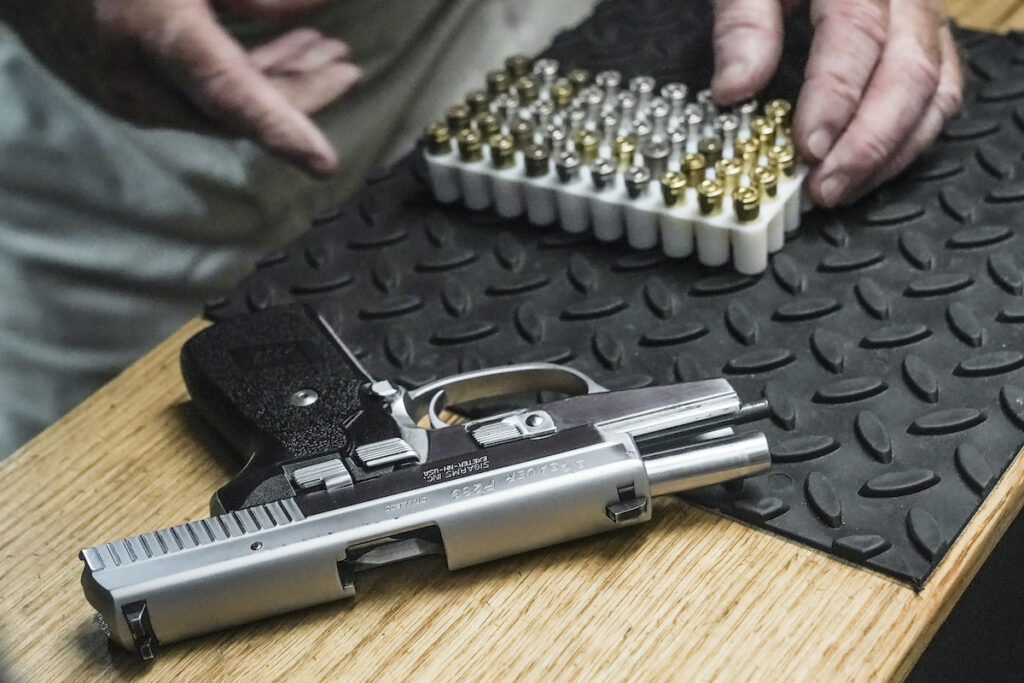Firearm technology is advancing at a rapid pace, and the developments in this field have significant implications for both gun enthusiasts and public safety. As the world continues to innovate, the integration of new technologies in firearms promises to bring improvements not only in the performance and efficiency of guns but also in enhancing safety. These innovations are expected to make firearms smarter, more reliable, and safer for both law enforcement and civilians. However, with these advancements come both opportunities and challenges that need to be carefully considered.
The introduction of features such as biometric identification and automated safety could revolutionize how firearms are handled and stored. This article explores the future of firearm technology, focusing on how it will shape the safety landscape, and discusses how services like NRA Range Safety Officer play a critical role in promoting safe firearm use, ensuring that advancements do not compromise the standards of safety and responsibility that are essential in firearm handling.
The Evolution of Firearm Technology
The evolution of firearm technology has been one of the most impactful technological advancements in modern history. Firearms have come a long way from the rudimentary muskets of the 17th century to the high-tech, precision-engineered firearms of today. Over the years, various innovations in materials, design, and functionality have made modern firearms more efficient, accurate, and durable.
In recent years, the focus of firearm technology has shifted toward enhancing safety features. Modern firearms are incorporating biometric systems, smart gun technologies, and sophisticated firing mechanisms. These innovations aim to reduce accidents, prevent unauthorized use, and ensure that firearms are used only by those with proper training and permission.
The rise of “smart guns” is one example of how technology is transforming the firearm industry. These firearms are equipped with sensors or biometric features, such as fingerprint recognition, to prevent anyone other than the authorized user from firing the weapon. While these innovations are still in their early stages, they represent a significant leap forward in addressing concerns related to gun safety.
Smart Guns and Their Role in Safety
Smart guns are one of the most exciting innovations in firearm technology. These guns are designed to only fire when they recognize the authorized user, reducing the risk of misuse by unauthorized individuals. This technology uses biometrics, RFID chips, or a combination of both to ensure that only those with proper credentials can operate the weapon.
The potential benefits of smart gun technology are clear. For instance, it could prevent children or unauthorized individuals from accessing firearms, significantly reducing the risk of accidental shootings. Furthermore, law enforcement officers could benefit from smart guns that only allow authorized users to fire, ensuring that stolen weapons cannot be used against them.
However, there are several hurdles that need to be overcome before smart guns become mainstream. Technical challenges related to reliability, battery life, and cost remain significant barriers. Additionally, some gun owners and Second Amendment advocates are concerned about privacy issues and government interference with firearm use. Despite these challenges, smart gun technology is expected to play a significant role in the future of firearm safety.
The Role of Training in Enhancing Firearm Safety
As firearm technology continues to evolve, so too does the need for responsible gun ownership. While innovations in technology can help reduce the risks associated with firearms, proper training and education remain essential for safe use. This is where services like NRA Range Safety Officer come into play. Certified Range Safety Officers (RSOs) are specially trained professionals who ensure that shooting ranges are operated safely and that shooters follow proper safety protocols.
RSOs play a critical role in ensuring that firearms are used safely in controlled environments. They are responsible for enforcing safety rules, providing guidance on proper handling, and responding to emergencies when necessary. Their expertise in firearm safety can help prevent accidents and promote responsible gun ownership. In an era of rapidly advancing firearm technology, having trained safety officers on-site at shooting ranges is more important than ever.
By hiring certified NRA range safety officer services, shooting ranges can ensure that they maintain a high standard of safety for all participants. This, in turn, helps foster a culture of responsible firearm ownership and usage, which is crucial for the ongoing development and acceptance of new firearm technologies.
AI and Automation in Firearm Safety
Another area where firearm technology is advancing is in the integration of artificial intelligence (AI) and automation. These technologies have the potential to significantly improve firearm safety by providing real-time data and analysis to the user. For example, AI could be used to monitor the user’s behavior and provide feedback on their stance, grip, and shooting technique. This could help novice users improve their skills and avoid common mistakes that could lead to accidents.
Automation could also play a role in improving firearm storage and safety. Automated systems could be used to control access to firearms, ensuring that only authorized users can access them. For example, smart gun safes could use biometric authentication or PIN codes to unlock, preventing unauthorized access.
While the integration of AI and automation into firearm safety is still in its infancy, it has the potential to revolutionize how firearms are used and stored. These technologies could significantly reduce the risk of accidents and misuse, making firearms safer for everyone.
Regulations in Firearm Technology
As firearm technology continues to advance, governments and regulatory bodies around the world will need to develop and implement regulations that ensure these technologies are used safely. Regulations will need to address concerns related to privacy, data security, and reliability, particularly as smart guns and AI technologies become more widespread.
In the United States, the development of firearm regulations has historically been a contentious issue. However, as firearm technology advances, there is a growing consensus that updated regulations are necessary to keep up with these changes. Policymakers will need to strike a balance between encouraging innovation and ensuring that safety is prioritized.
At the same time, it is important for firearm manufacturers to work closely with regulatory bodies to ensure that new technologies meet safety standards and do not introduce unforeseen risks. This collaborative effort will be key to ensuring that advancements in firearm technology contribute to greater safety and responsibility.
Final Words
The future of firearm technology holds great promise for enhancing safety, reducing accidents, and preventing unauthorized use. Innovations like smart guns, AI, and automation are transforming how firearms are used, stored, and accessed. However, as these technologies evolve, it is essential that gun owners receive proper training and that shooting ranges are equipped with certified professionals to ensure safety. NRA Range Safety Officers play a pivotal role in this process, helping to create a safer environment for everyone involved in firearm activities.
As the industry continues to innovate, it is crucial that firearm technology is developed with safety at the forefront. Through a combination of advanced technology, responsible ownership, and proper training, the future of firearms can be both safer and more efficient.






